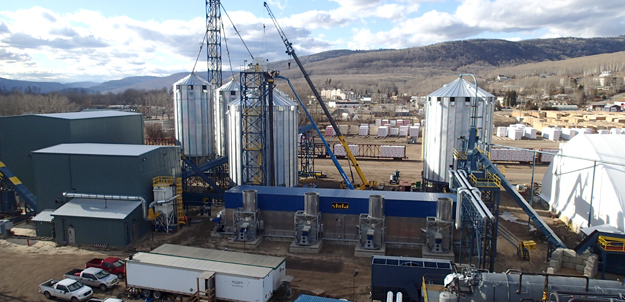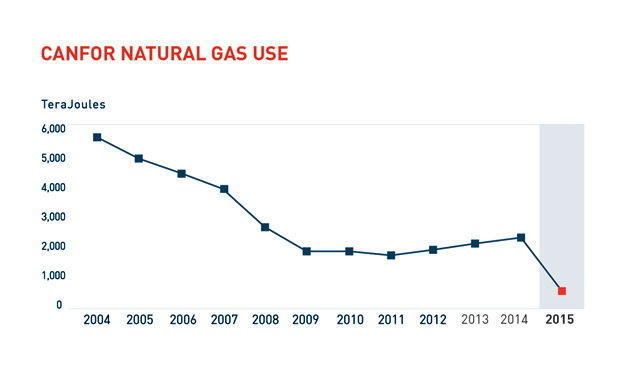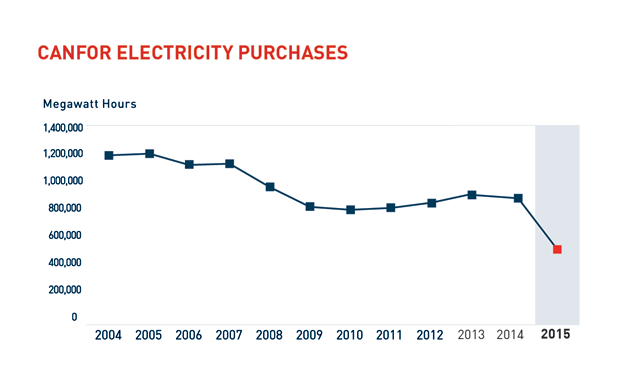Energy Management — Canfor
Canfor is saving 11,800 MWh a year thanks to our energy management activities. That’s enough energy to power 825 homes each year. Our energy savings to date have primarily come through capital projects and the installation of equipment such as high-efficiency lighting, compressed air projects and high pressure blower conversions to conveyors. We continue to focus on energy management awareness across our divisions through improved communication of energy-efficiency opportunities.
Canfor Energy North, which was created in 2015, began building pellet plants in Fort St. John and Chetwynd with a total 175,000 ODT production capacity located in Fort St. John and Chetwynd. This partnership includes an organic rankine cycle (ORC) generator, which will generate 21,000 MWh a year – enough to power 1,470 homes each year. Our Elko Sawmill switched its operations from natural gas to biomass to heat its lumber kiln, which means all of our BC facilities have biomass as their primary heat source.
Canfor’s Prince-George based Energy Manager, a position co-funded by BC Hydro, has a specific focus on identifying and developing energy-efficiency opportunities that reduce energy use and cost for our wood products manufacturing facilities. This includes developing both small- and large-scale strategic plans for energy reduction. Our Sustainable Energy Management Plan (SEMP) focuses on identifying potential opportunities for hard-wired energy use reductions as well as demand side management. This is achieved through implementing energy-efficiency measures in capital projects and increasing awareness of energy savings that can be realized by simple actions every employee can make. The SEMP considers the energy resources that Canfor utilizes and asks the fundamental question of where we can gain efficiency in our processes.
Our corporate 10% reduction target is based on active Canadian operations for each reporting year. The ratio of electrical consumption and mill lumber production results in an energy intensity metric (kWh/Mfbm) which can be compared against the same ratio for a baseline year. For 2015, we had 12 active facilities with an average electricity intensity of 112.5 kWh/Mfbm. Baselined to 2011, this represents a 5.1% intensity reduction relative to our 10% target (from 118.5 kWh/Mfbm). Baselined to 2014, this represents a 1.9% improvement (from 114.7 kWh/Mfbm).
However, we haven’t stopped there. Canfor is also on the leading edge of innovation with market transformation projects in partnership with BC Hydro. In 2015, we worked together to develop, fund and install a product for variable frequency drives where traditional waste heat due to process load changes is eliminated and converted back into useful power.
 Chetwynd pellet plant
Chetwynd pellet plant

Natural gas purchases dropped significantly as a result of the sale of Taylor Pulp Mill to Canfor Pulp in January 2016. Recently acquired Hermanville and Anthony Forest Products operations were included from the time of full ownership. Other new acquisitions that did not close in 2015 are not included.

Electricity purchases dropped significantly as a result of the sale of Taylor Pulp Mill to Canfor Pulp in January 2016. Recently acquired Hermanville and Anthony Forest Products operations were included from the time of full ownership. Other new acquisitions that did not close in 2015 are not included.